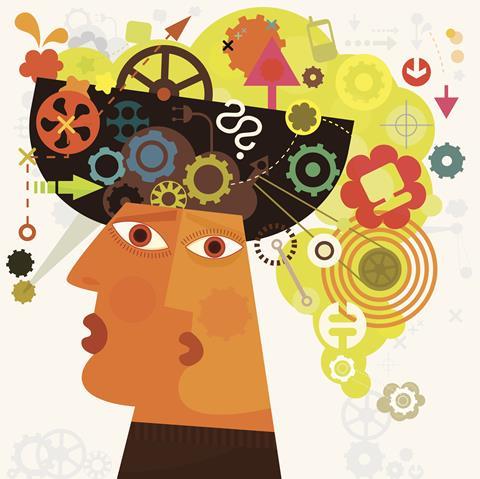Once we identify the problems caused by cognitive overload, we need to tackle its causes in our classrooms and labs.

Last week I gave a very brief and rough overview of the psychology of learning: how working memory is very limited, how an overloaded working memory struggles to process new information, and how a process known as chunking helps clear the bottleneck.
This week I want to think about how understanding the learning process can inform our teaching.
Teaching through the bottleneck
I think there are three points to take away:
- Be aware that even things that are not directly related to what you are teaching can cause cognitive overload
- Do not not encourage learners to push through an overloaded memory
- Really boil down to what you want students to grasp
The first point is particularly relevant to chemistry, a subject that requires work in a lab. Let’s not deny that inquiry based learning is a good way to teach chemistry. Having students form their ideas based on what they see is not only true to chemistry’s heritage, but it’s good practice for future scientists. Plus, practical work provides strong evidence for abstract concepts.
However, in an unfamiliar lab there’s a lot to take in, and that leaves room for misconceptions and misunderstandings.
When students are in a teaching lab, the very least we expect of them is safety. This means they’ve got to handle fragile equipment and potentially harmful chemicals. Even so, we hope they’re doing more than just being safe. This really is a lot of cognitive load. Just setting up apparatus, measuring out materials (especially if converting between units) can take up quite a few chunks.
Then they’ve got to do the experiment. They’re watching what they’re doing, reading a lab script, and looking for the chemistry in it, trying to explain it. This is going to put a lot in the working memory as well as recalling long term memories. Then the student has to adjust these concepts to new models.
Overcoming overload
Reducing this cognitive load in the lab is difficult. Ideas like microscale chemistry practicals (such as those advocated by CLEAPPS) can help address this. The idea here is that by using minimal equipment, which can’t really break and does not require much effort to set up, we can let students focus on the chemistry they’re seeing.
Alternatively, having equipment set up before arriving could help. Unfortunately, not many schools have that amount of time for preparation. In this case, placing an activity between setting up equipment, and doing the practical could act as a way to give students time to reset what’s in their memory. The Zeigarnik effect shows that a completed task can leave our working memory pretty easily. Have you ever put bread in the toaster only to be surprised when it popped up? I do it at least once a week, but maybe that’s not something I should admit to.
A challenging balance
The last of the three points above is related to what we expect of our students. With limited working memory capacity, many potential sources for overload, and the difficulty of breaking down knowledge once you have it, we shouldn’t expect too much from students. We should focus on understanding first.
But this doesn't mean that we shouldn't challenge our students. The difficulty comes in striking the balance. Knowing your students is vitally important for this – understanding what each student struggles with informs the ways in which they can be pushed further.
This kind of situation presents a good case for mastery learning, which suggests that students reach mastery of a specific skill or concept before they move on to the next. The result is that students spend their time on what’s hardest for them.
It’s here that we see the importance of monitoring student understanding and progress. Ultimately, finding the right balance requires an open dialogue between teachers and researchers.
In conclusion
This has been a very brief overview of working memory. As briefly as I can put it, we shouldn’t give our students too much information at once. We need to focus on exactly what it is we want our students to learn, and move towards that. Streamline the process so they’re just looking at what’s necessary.
If students can grasp the nature of chemistry, rather than just the facts, then they can handle practically any problem. We want our teaching to help our students to chunk content well so that chemistry is not rote learning, it’s application.
Tom Wilson is a chemical education PhD student at the University of Southampton, UK
The curse of knowledge

Tom Wilson looks at how cognitive overload puts up a roadblock to learning
- 1
 Currently
reading
Currently
reading
How to avoid cognitive overload in the classroom












1 Reader's comment